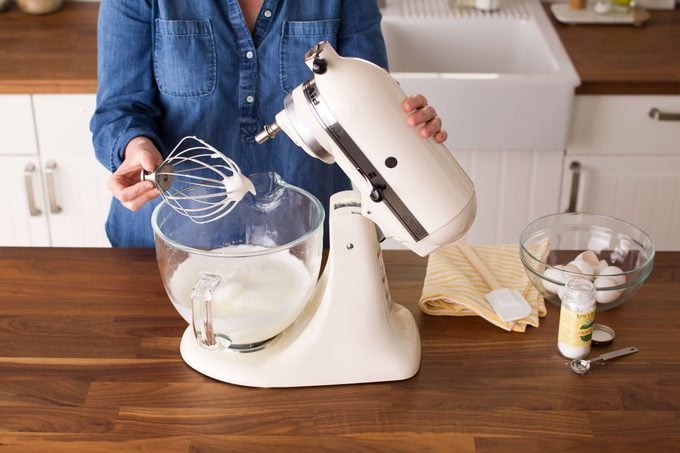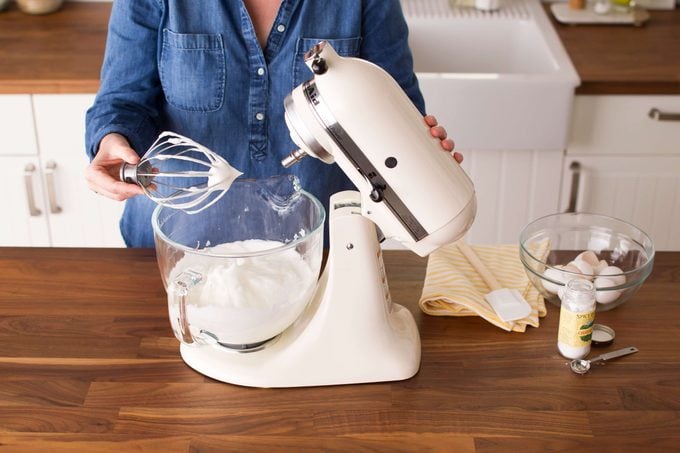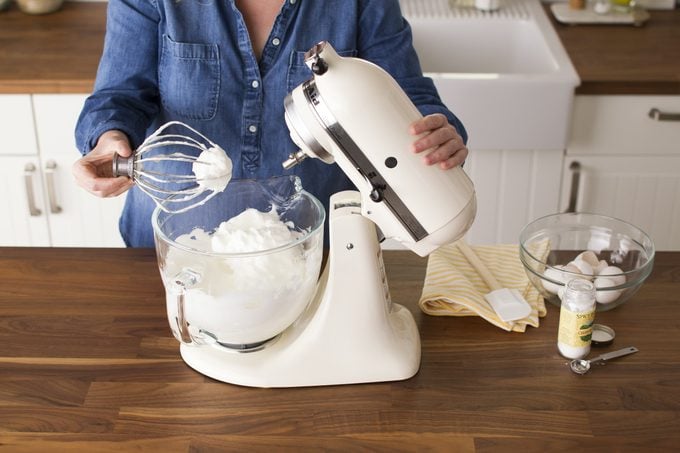Stiff Peaks and Soft Peaks: How to Whisk Egg Whites
Updated: Mar. 19, 2024

Whether soft or stiff, getting the right peaks for your recipe is crucial for light and airy desserts. Learn how to make soft and stiff peaks from our Test Kitchen experts.
Whether you’re making baked Alaska, pineapple upside-down cake or chocolate mousse, you’ll find that all these recipes—as different as they seem—have something in common. They all require you to whisk egg whites to soft or stiff peaks.
These beaten egg whites give these treats their signature textures. But getting egg whites to that just-right stiff peaks or soft peaks stage can be tricky at first.
That’s where our Test Kitchen team comes in. These experts break down how to beat egg whites into the perfect soft and stiff peaks for your meringues, macarons, angel food cakes and much more.
What Are Stiff Peaks and Soft Peaks?
Stiff and soft peaks refer to stages of whipped egg whites. When air is incorporated into egg whites by whisking, the whites become opaque and get a lighter, fluffier consistency. This loftiness helps give desserts light textures.
Soft and stiff are the two stages of egg whites that are often called for in recipes. Soft means that the egg whites are still a bit loose and droop off a spatula (more on this below). Stiff means that the egg whites can hold their shape.
How to Get Soft and Stiff Peaks
To whisk egg whites, you’ll need a few things. First, make sure that your egg whites are at room temperature. This ensures that they will beat up easily.
Also, be sure there are no yolks (not even a drop!) in your egg whites. This will also prevent you from getting the right volume. You can learn a few tips about separating eggs here.
Be sure that you’re working with a pristinely clean bowl, preferably metal or glass. Any speck or residual grease from your last batch of cookies could prevent your egg whites from beating up to the right volume. Avoid plastic, if possible, because it’s more likely to hold onto any oily residue.
Lastly, it’s time to break out the stand mixer or hand mixer. Whisking by hand is possible, but very tiring. We don’t recommend it.
Step 1: Start beating to get soft peaks

With your egg whites in your mixing bowl, add in the cream of tartar. The cream of tartar is important here—it helps stabilize the eggs so they hold their shape. Even if your recipe doesn’t call for it, you can add a pinch.
Start beating your whites with the whisk attachment on medium speed. At first, your eggs will appear translucent and frothy. That means you’re just getting started. With a little more time, you should end up at the soft peak stage.
You can tell you’ve developed soft peaks by turning over your whisk. There should be a definite peak shape, but it’s loose and melts back into the mix after a few seconds.
Step 2: Keep going for stiff peaks

If your recipe calls for stiff peaks, keep beating those egg whites. Stiff peaks are formed when you lift up your beater and you get a nice peak and it holds its shape (rather than melting away like with soft peaks). Once you reach this stage, stop whisking immediately.
Step 3: Fix over-mixed egg whites

You do not want to get to step three! Overworked egg whites won’t be a good addition to any of your recipes. You can tell your egg whites have been mixed too long if they look grainy and you see liquid pooling at the bottom of the bowl.
If you’re in a real bind, you can try to recover over-mixed egg whites by adding in an additional room temperature egg white to help loosen up this mixture. If you have time, go back to step one and try again.
Once you master this essential technique, you’re ready to take on classic desserts like lemon meringue pie (or one of its tasty variations).



















